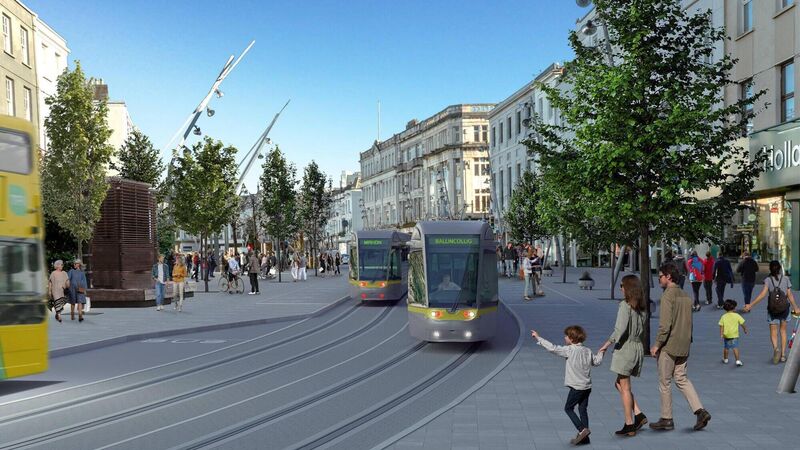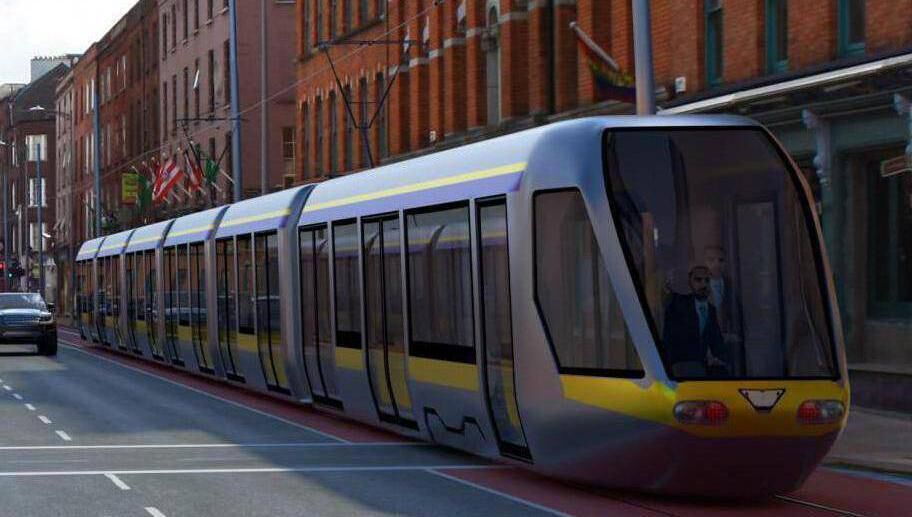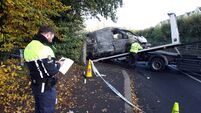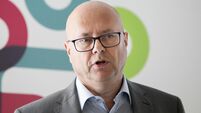Catherine Conlon: Cork Luas will improve health outcomes for generations

The Cork Luas is imperative to mobility in a rapidly expanding city.
Taoiseach Micheál Martin said this week that the State will do whatever it can to accelerate delivery of the multi-billion euro Cork Luas, amid mounting calls for an end-of-decade start date.
Lord Mayor Dan Boyle, who proposed a light rail route while a TD in 2006, described the recent publication of the draft route as a "point on the journey".
"We need a commitment to funding and we need a timetable. It must be available in the quickest possible time."
The Lord Mayor is right. The Cork Luas is imperative to mobility in a rapidly expanding city.
Just as important is the potential impact on public health in terms of less noise pollution, more physical activity and the independence of children, teens and young adults as they move around the city.
Cork has been ranked as the second noisiest city in Ireland, according to the results of a newly-released poll by Specsavers. The survey found almost half (43%) of people in Cork think their hearing is worse due to city noise, 40% struggle to follow conversations because of it and a quarter (25%) feel unable to fully engage in social situations.
The survey found 59% of people in Cork believe their environment has become louder over the past five years, while a fifth (21%) say noise disrupts their lives at least once a week.
Almost half (47%) felt traffic was the biggest culprit.
Noise is not just a nuisance. In fact the threats to health from noise often remain underestimated, according to the International Commission on Biological Effects of Noise.
Researchers and clinicians are trying to change this. They have shown that noise pollution not only drives hearing loss, tinnitus, and hypersensitivity to sound, but can cause or exacerbate cardiovascular disease; type 2 diabetes; sleep disturbances; stress; mental health and cognition problems, including memory impairment and attention deficits; childhood learning delays; and low birth weight. Scientists are investigating other possible links, including to dementia.
The research shows noise has an impact even while we sleep, so responses like a raised heart rate continue while fast asleep in a noisy traffic-fuelled environment.
To combat the ill effects of urban noise pollution, Paris is deploying automated sensors and cracking down on the loudest vehicles. The so-called "medusa" devices are equipped with multidirectional cameras and eight microphones — the sensors can hone in on sources of extreme noise and photograph the license plates of offenders.
A Cork Luas, by slicing the number of motorists in the city, will have an immediate impact on reducing traffic noise.
Noise is not the only factor. The importance of physical exercise is by now very well known, but recent coverage in the (2024) outlined its importance in avoiding dementia. There is a linear relationship between physical fitness and dementia. In other words, the higher the fitness, the lower the risk of dementia.
A paper in (2023) outlined how over 10 years, those with the highest fitness levels had a 33% reduction in the risk of dementia.
In studies following people over 40 years compared to those with ‘average’ fitness, having low fitness was linked to a 41% increase in the risk of dementia and having a high level of fitness was linked to a 78% reduction in the risk of dementia.

What has all this got to do with a Cork Luas?
Individuals who use public transport get over three times the amount of physical activity per day than those who don’t, by walking to stops and final destinations. That means lower risks of serious diseases such as heart disease, stroke, diabetes, hypertension, osteoporosis, joint and back problems, cancer and depression.
Public transport is also safer than individual vehicles, with accidents about one-twentieth the passenger fatality rates of car travel. Added to that, areas with high public transit movement tend to have better overall security and reduced crime rates.
The Cork Luas will improve access to education (schools and universities) and employment, which in turn improves long-term economic opportunities. It will also provide access to social and recreational activities, allowing individuals to participate in events they otherwise could not.
Finally, good public transport benefits community cohesion by promoting positive interactions between neighbours. Studies have found even casual interactions with familiar strangers, such as greeting your driver or fellow passengers, help improve emotional wellbeing and resilience. Contrast this with the regularly unpleasant interactions between drivers, each in their own self-contained pods.
Pollution is estimated to cause as many deaths per year as traffic accidents. However, public transport produces far less pollution per passenger mile by utilising advanced technologies and higher standards. Electric rail transit also has the potential to reduce transport greenhouse gas emissions. Transport remains one of the largest contributors to the greenhouse gas emissions driving climate change.
One of the biggest factors in establishing a physically fit lifestyle is habit, but our children are now mostly sedentary. Since the mid-1900s, urban-dwelling children’s activities in western Europe have shifted from city streets to back gardens, parks and playgrounds — places deemed ‘appropriate’ for children. These places are largely removed from the hazards posed by cars, where children’s behaviour can be closely monitored by parents and childminders.
The normalisation of the free movement of cars on streets has reinforced an ideology that streets exists simply for the movement and parking of cars, trucks and vans. This ideology has effectively displaced children and other non-motorists from our cities’ most ample public spaces — streets.
Research has shown these changes to the urban landscape play a significant role in the dramatic decreases in children’s ability to walk and cycle as well as engage in outdoor free play in their cities. These practices are critical for children to be physically active.
Meanwhile, children spending less time playing, and moving about outdoors in their communities also diminishes the overall liveability of our communities. The development, health and wellbeing of children are compromised; neighbourhood social cohesion suffers; and the physical dominance of cars on city streets creates sterile, exclusionary and hostile spaces.
While researchers have highlighted the effects reductions in active travel have had on diminishing children’s health and wellbeing over the last 20-30 years, the research has largely overlooked the role independent mobility plays in enabling active travel and outdoor play to occur. If your child can travel to football practice three Luas stops away with no parental input, that makes it all the more likely this physical activity will take place.
A recent paper in the (2024) highlighted how children’s independent mobility was "the elephant in the room" in our current understanding of declining levels of physical activity among children".
"Given how motor-normativity appears to have stripped children of their right to be independently mobile, disrupting it is key to children reclaiming their independence and becoming more active."
The Cork Luas has the potential to streamline mobility and reduce congestion. As important is the potential to reduce noise pollution from traffic as well as improving physical fitness and community resilience.
Critical to children’s physical and mental wellbeing is independent mobility in the space where they live. The development of efficient public transport could be a game-changer in restoring childhood autonomy in Cork City, free from constant parental vigilance.
- Dr Catherine Conlon is a public health doctor in Cork





